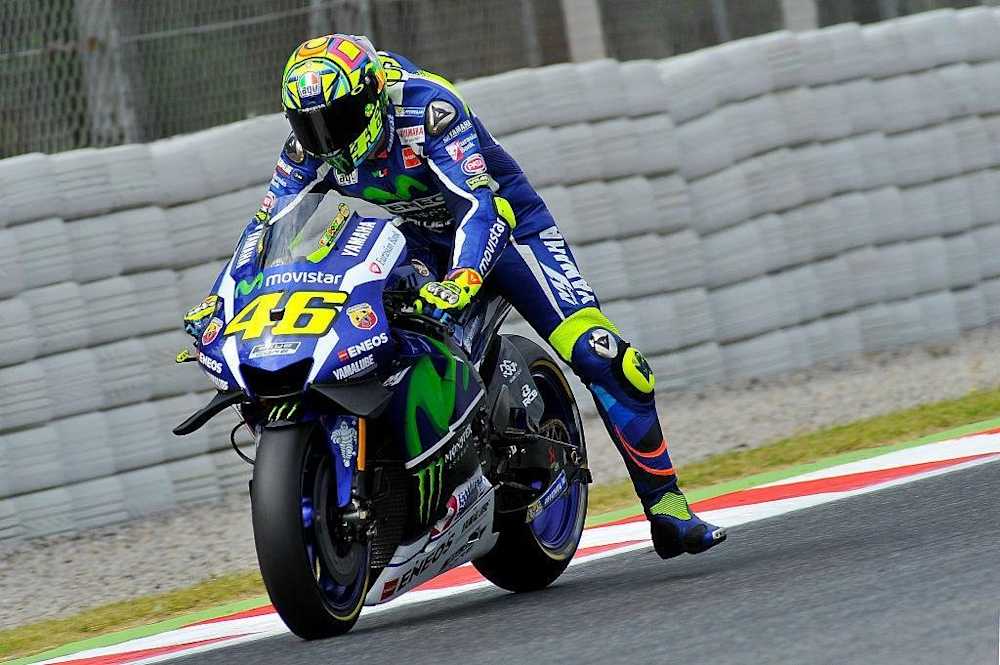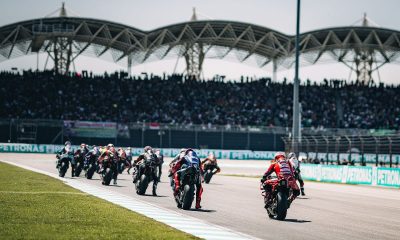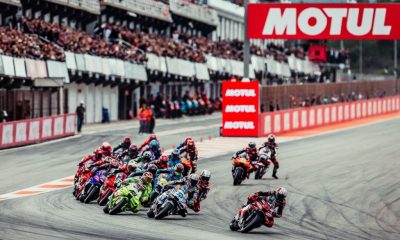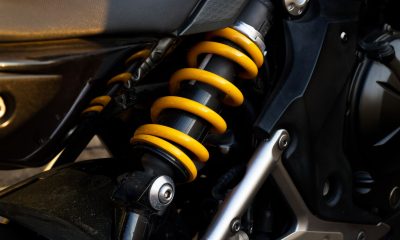Ever wonder why MotoGP riders stick their leg out before corners? Here’s the real reason behind MotoGP’s most talked-about riding technique and how it helps riders stay in control at over 300 km/h.

Subscribe to our Telegram channel for instant updates!
If you’ve ever watched a MotoGP race, you’ve probably noticed riders suddenly swing one leg off the bike when approaching a corner. It might look strange or even showy, but this move that is known as the leg dangle or foot-out technique is able to serve a very real purpose.
So, why do MotoGP riders dangle their leg when braking? Let’s break down the science, the strategy, and the story behind one of modern racing’s most fascinating techniques.
1. How the Leg Dangle Started
The leg dangle became famous in the mid-2000s thanks to Valentino Rossi. At first, many thought it was just a personal quirk or a psychological tactic in order to distract rivals. But as more riders including Marc Márquez, Jorge Lorenzo, and Francesco Bagnaia began to copy it, engineers and analysts realized that the move actually offered a performance advantage.
In MotoGP, nothing happens by accident. If a technique makes you even a fraction of a second faster, everyone starts using it.
2. It Helps Stabilize the Bike During Heavy Braking
When MotoGP riders brake from over 300 km/h down to 100 km/h or less, they’re dealing with massive amount of force. The front tire is under extreme pressure, and the rear wheel often lifts slightly off the ground. By sticking one leg out, the rider slightly lowers the bike’s center of gravity and shifts their body weight in a way that helps to stabilize the chassis. This helps control front-end dive, prevents rear wheel lift, and improves balance during hard braking especially just before corner entry. It’s not just about slowing down, but it’s also about keeping the bike as stable as possible when physics are working against you.
3. It Creates a Bit of Aerodynamic Drag
There’s another hidden advantage, aerodynamics. When a rider dangles their leg, it acts like a small airbrake, adding drag that helps slow the bike slightly. It’s not a major braking force, but it gives the rider a touch more stability and control while adjusting their body position before leaning into the turn. This move also helps riders shift weight forward and inward which helps to set up the perfect posture for a quick and smooth corner entry.
4. The Psychological Factor
MotoGP is not just about speed, it’s also about mind games. When a rider in front suddenly extends a leg, it can momentarily distract or block the vision of the rider behind. While it not be the main reason for doing it, this can make overtaking just a bit harder. Every split second is crucial in racing, and even a small visual disruption can make a big difference in a braking duel.
5. Not for Street Riding
It’s tempting to imitate your favorite MotoGP hero, but the leg dangle isn’t something that works well on the street or even on amateur track days. Professional riders have years of experience, intense physical training, and deep understanding of how their bikes behave under extreme forces. For everyday riders, it’s far better to focus on smooth braking, proper body positioning, and throttle control which are the fundamentals that truly make you faster and safer.
Conclusion: A Mix of Physics and Precision
The leg dangle may look like a flashy MotoGP habit, but it’s actually a clever combination of aerodynamics, balance, and psychology. Born from Valentino Rossi’s intuition and refined by modern champions, it has become an integral part of MotoGP’s high-speed evolution. At over 300 km/h, every movement matters and even something as small as sticking a leg out can make the difference between braking perfectly… and missing the corner entirely.































Facebook
Instagram
X (Twitter)
YouTube
LinkedIn
RSS